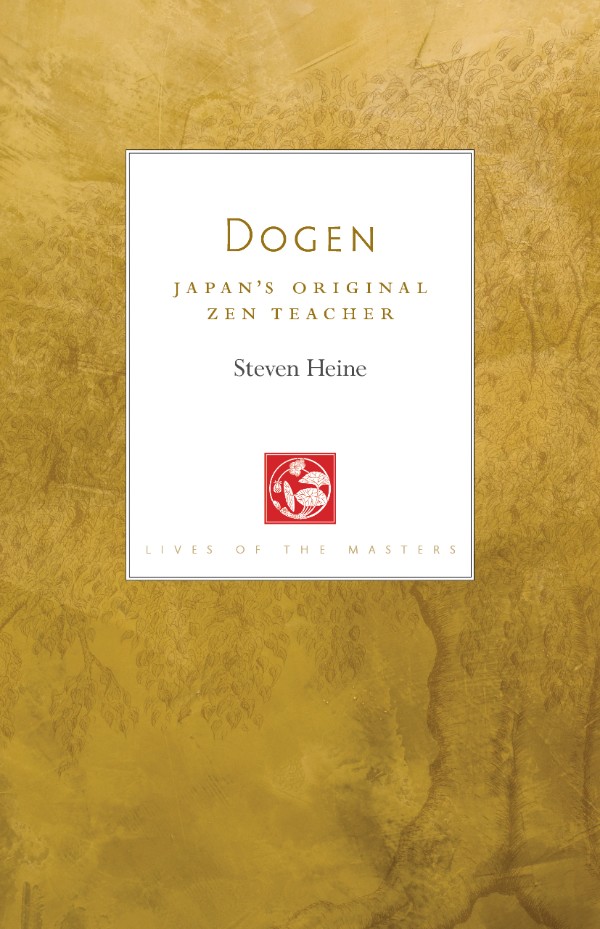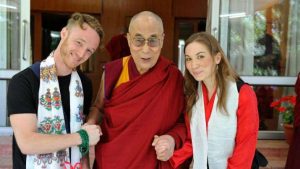The founder of the Soto school of Zen Buddhism in Japan, Eihei Dogen (1200–1253) is one of the most influential figures in the history of East Asian religion. Best known for his teaching method of “just sitting” (shikan taza)—also referred to as “zazen”—Dogen played an instrumental role in the inter-religious exchanges that took place between Japan and China in the 13th century. His life and literary works have been widely translated and evaluated, and are now the subject of Steven Heine’s new book Dogen: Japan’s Original Zen Teacher (Shambhala 2021). Shedding light on the historical and geographical contexts that gave way to Dogen’s philosophy of Zen, Heine also offers new insights by debunking some misconceptions about Dogen while candidly highlighting key questions that remain unanswered to this day.
A professor and founding director of Asian Studies at Florida International University, Heine has dedicated a large part of his life and career to studying and writing about Dogen. It is therefore no surprise that his newest publication features in Shambhala Publications’ “Lives of the Masters,” a series that provides insight into the lives and teachings of key Buddhist figures. According to Heine, he first came across an example of Dogen’s poetry in 1961 while studying Japanese literature in college—a chance encounter that ended up deeply influencing his professional path and identity. Having since spent more than half a century researching Dogen, Heine has written multiple titles about the great master, including Dogen and the Koan Tradition (State University of New York Press 1994) and Did Dogen Go to China? (Oxford University Press 2006).
Heine shares that one night in 1980, when he was studying at Komazawa University of Tokyo, he had an inspirational vision. The heartfelt incident, which apparently took place while Heine was lodging in a traditional Japanese wood house, is beautifully described in the following passage:
This was not a vision of Dogen himself nor of any of the Soto sect’s other luminaries. It was instead a couple of midlevel manager monks who appeared to me that night, floating in midair while calmly sitting on ethereal lotus leaves. The angels appeared mysteriously to offer me a kind of “crossroads” proposition, similar to what is said to occur in the American blues tradition for aspiring guitarists. They counseled that I should accept and embrace the difficult circumstances as a necessary test and gateway to greater knowledge of Dogen. “Stick with us”—meaning, with studies of Dogen Zen—they assured me, and eventually, if I remained patient and persistent regarding my scholarly path, doors would fly open enabling me to advance and even prosper in the academic world. This was going to lead to more opportunities to promote research on Dogen in the West. (xvi-xvii)
In line with other titles from the “Lives of the Masters” series, Dogen is comprised of a comprehensive summary of the master’s life as well as a selection of his works. According to Heine, “Part 1 of the book surveys and assesses the major events and crucial religious ideas and ideals that were expressed during the four main periods of Dogen’s life.” (35-36) Each of the four periods lasted approximately a dozen years, namely:
1. The formative period (1200–1213), which “revolves around Dogen’s aristocratic background in Japanese court society.” (36)
2. The transformative period (1213–1227), which “encompasses the religious path Dogen started after he quit Mount Hiei and began training at Eisai’s Kenninji temple in central Kyoto.” (36)
3. The reformative period (1227–1243), which “begins with Dogen’s slow-starting efforts to establish Soto Zen in Japan.” (37)
4. The performative period (1243–1253), which “covers the fulfillment of Dogen’s mission to become leader of a genuinely reclusive Zen monastery.” (37)
As for the writing selections, which form part 2 of the book, they consist of sixteen short texts that were composed at pivotal moments in Dogen’s life, as well as the four major collections—that is, the Treasury, the Extensive Record, the Monastic Rules, and the Japanese Poetry Collection. In my opinion, Heine does an excellent job at bringing to life the great Zen master Dogen, and he does this by collating carefully chosen aspects of Dogen’s biography with his texts. When discussing Dogen’s journey to China, for example, he highlights a key passage in the chapter “Realization Here and Now” that suggests that Dogen’s view of reality in relation to human perception underwent a dramatic shift:
When we board a boat and sail into the middle of the ocean where the mountains are no longer in sight [i.e., beyond the horizon, yamanaki kaichu], we look around in the four directions and all we seem to see is a circle. We do not perceive any other shapes. Nevertheless, we know that the great ocean is not round, nor is it square, and the features of the ocean are altogether inexhaustible, so that for some creatures it is like a palace or a jeweled necklace. We quickly realize, for this moment, that it is just the part our eyes can take in that appears circular. There are countless forms both amid and beyond the realm of sensations, yet we see and understand based only on the capacity of the eye. (70)
Heine draws from the usual traditional texts—that is, from Dogen’s own writings and those of his chroniclers—yet his methodology is unique. For example, he makes use of timelines, charts and maps, which provide additional context to each stage of Dogen’s life. They also emphasize other Tendai and Zen Buddhist cloisters that were conducive to the development of Dogen’s Soto school of Zen. Careful to bring to light some of the consistent and inconsistent narratives surrounding Dogen, Heine’s visual aids help solidify his hypothesis.
For example:
Another key point revealed in the table refutes skeptics who argue that Dogen’s creativity was greatly diminished during the last decade of his career. The numbers clearly show that he remained productive in various ways that should not be overlooked because of a preoccupation with the Treasury. Although Dogen continued some degree of composing and editing Treasury chapters in the late years, particularly the twelve-chapter edition, he mainly shifted his focus to working on the other collections. (202)
In addition to addressing ongoing controversies surrounding Dogen’s biography and teachings, the book explores the following topics: the “great doubt” that motivated the master’s religious journey, his non-dual philosophy of time and death, the crucial teachings he learned in China and brought back to Japan, the social-political turmoil of Kamakura that led to changes in Japanese Buddhism, and Dogen’s poetry and renderings of Zen Koans. Adding new depth to these well-trodden themes, Heine successfully engages the reader in re-exploring and re-evaluating the famous master Dogen, whose legacy to Zen Buddhism is undeniable.
References
Heine, Steven. 2021. Dogen: Japan’s Original Zen Teacher. Boulder, CO: Shambhala Publications.
Related features from Buddhistdoor Global
Book Review: Dosho Port’s Translation of The Record of Empty Hall
Daisetsu Teitarō Suzuki: “Suzuki Zen”
What We’re Looking for Is What’s Looking: Accessing the Agent of Healing and Awakening
The Inquisitive Mind: A Zen Approach to Haunting Questions
Does Artificial Intelligence have Buddha-nature?
Do I Need a Teacher to Practice Meditation?
Expressing the Inner Light: The Luminescent Art of Sarah Brayer












